The Razer Viper (the wired version) has always been the neglected sibling in the family. Yes, it came first, but the Ultimate edition is much more impressive on a technical level, and the Mini version was something that a lot of people in the community had been asking for, so the regular wired version has been somewhat forgotten over time. But no more of that. While the community was busy fawning over its siblings, the Viper quietly went to work, and a couple of motivational montages later it emerged as the Viper 8KHz.
This newest version doesn’t change anything on the exterior but it comes with an impressive new feature: a polling rate of 8000Hz. This makes it one of the fastest gaming mice on the planet (most gaming mice today have a max polling rate of 1000Hz) and that combined with improved optical mouse switches should make this the tool for serious competitive gamers. So is 8KHz a gimmick or something that you absolutely need? Does this new version leave the competition behind with ease, or is there more to it? Find out everything you want to know in our full review!
At A Glance
Razer Viper 8KHz
Used by 7 players ()Even if we leave the whole 8000Hz polling rate thing out of the equation, the Razer Viper 8KHz is a fantastic gaming mouse. It has a safe shape (though be wary of how flat and long it is), great clicks, a flawless sensor, and it’s built nicely, making this a really solid choice for people who are into this kind of shape and like the features.
Pros
- Great gaming performance
- Good build quality
- 8000Hz polling rate
Cons
- Cable is rather thick and rigid
Specs
| Sensor | Focus+ |
|---|---|
| Polling Rate | 1000 / 2000 / 4000 / 8000 Hz |
| Button Switches | Razer Optical |
| Connection | Wired |
| Shape | Ambidextrous |
| Length | 12.7cm |
| Height | 3.8cm |
| Weight | 71g |
| Width | 5.8cm |
First Impressions
Let me first say that this 8KHz isn’t some sort of ‘advanced edition’ of the regular Viper. It costs the same amount of money (at least at MSRP: of course local prices can vary) and is meant to just outright replace the regular Viper. To me that’s the right decision: it ensures that more people will get their hands on this new technology and it’s also a way for Razer to say ‘we think that this is the future.’ For wired mice, at least. Slapping this tech in a wireless mouse just isn’t feasible right now according to some Razer representatives, so I wouldn’t hold my breath waiting for a Viper Ultimate 8KHz anytime soon in case you were wondering about that.
On to the mouse, then. I have never extensively tested a regular Viper but I did review the Viper Ultimate and Viper Mini so I have some experience with the product line. What immediately caught my attention when I first grabbed the 8KHz is how much better the buttons feel. I had no problems with the first iteration of Razer’s optical mouse switches (at least not on the units that I got for review) but it couldn’t be denied that they felt a fair bit less crispy than actual mechanical switches, and it feels as if Razer has really been working on that aspect.
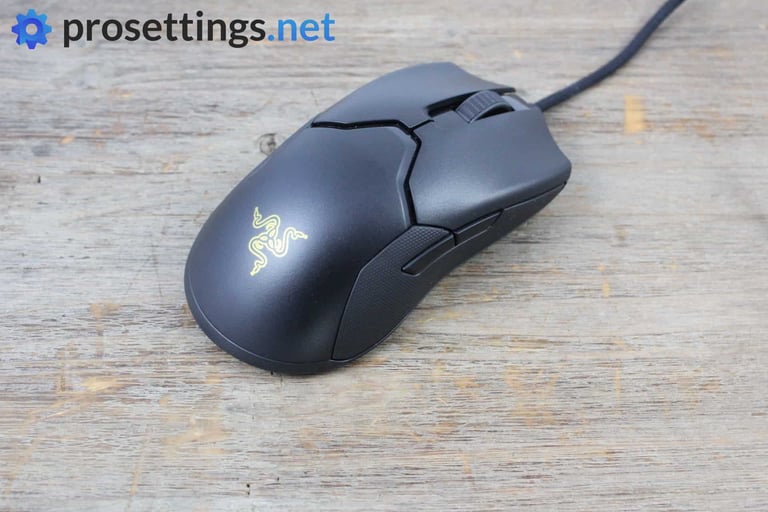
Something else that’s changed is the cable. This one’s a bit stiffer and thicker than what was on offer with the regular Viper, and that’s because the 8KHz technology needs extra shielding, leading to a more rigid cable. I’ll go deeper on these aspects further on in the review of course, but these are the major changes when compared to the other full size Viper models.
Due to the different technologies that are inside the 8KHz it weighs just a bit more than it did when it first released with a max polling rate of 1000Hz. This one comes in at 71 grams. That puts it just above the ‘ultralight’ category (we consider every mouse that’s 70 grams or less to be an ultralight mouse) but of course it’s still an extremely respectable weight.
The mouse itself is a medium sized ambidextrous mouse (with buttons on both sides) with a very flat and long-feeling design.
Packaging
Not a lot can be found inside the box of the 8KHz. You get the mouse, the usual documentation (including the signature ‘thank you for becoming part of the family’ Razer note), a bunch of stickers, and that’s pretty much it.
That’s fine with me but for a mouse that’s so laser-focused on top tier competitive gamers I always like to see a set of additional mouse feet in the box. As per usual the omission of this set won’t influence my opinion on the mouse, but it’s a bit of a missed opportunity if you ask me.
Shape, Coating, and Mouse Feet
The Viper is a very neutral and flat-feeling mouse. It’s fairly long with minimal curvature (save for the indentation in the middle and the back flare, but that’s rather standard) so it’s got a very safe shape if you like flat and long mice. This really won’t be it for someone who wants to have their palm filled in any way, unless you have small hands and/or you use a very horizontal palm-dominated grip style.
Something that’s also noticeable is the fact that the Viper has comfort grooves in the main buttons that are rather pronounced. I like that kind of design so for me it’s a win, but if you dislike these sorts of things this might be important to know.
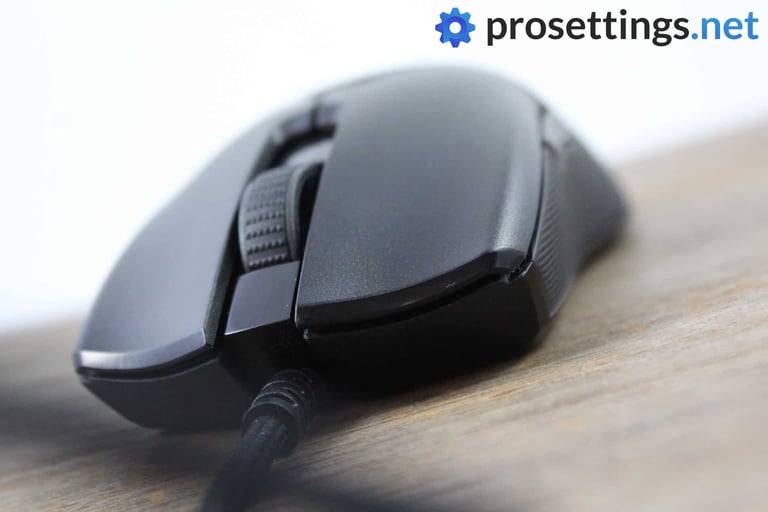
As far as the coating goes I really don’t have anything bad to say. The top part of the mouse has a matte black coating that handles sweat and oils remarkably well, but the most important parts of a mouse (for grip anyway) are of course the sides. These are made out of a gently textured rubber that I absolutely love. Even after long gaming sessions the rubber never starts feeling greasy, and it’s a very thin layer that’s been expertly applied so you never ‘dig into’ the rubber. It very much feels as if it’s part of the shell instead of something that was tacked on afterwards.
Side buttons can be found on both sides and are conveniently placed (though they’re a bit thin: this allows them to stay out of the way for most people but if you grip near the bottom there’s quite a bit of ‘travel’ before you get to the button) but be warned that both sets of buttons are active by default. I found this out when I was playing a quick deathmatch game after unboxing the mouse, so it’s not as if it ruined a game for me but this is important to know if you’re going to use this mouse right out of the box.

On the bottom of the mouse are three skates: two large ones and then one smaller one around the sensor. These provide a reasonably smooth glide on most pads but if you use a very textured or spongy pad you might find that the mouse becomes a bit scratchy if you put a lot of pressure on it when gliding. That’s because the skates are relatively thin, causing the sides of the mouse to make contact with the pad. I didn’t actually encounter this often during gameplay but it is something to note regardless.
Recommended Grip Types
The flat and long shape of the Viper 8KHz doesn’t exactly lend itself to palm gripping, so if you’re someone who uses a grip that predominantly relies on palm contact you might want to steer clear but for claw (again: unless you want a lot of palm contact) and definitely fingertip grippers this could be a great one to consider.
As always I’d like to conclude this section with a disclaimer: I don’t know you, so I don’t know your preferences. You might have smaller hands and love large mice, or you might prefer super flat mice even with a palm grip. Always take these ‘grip and size recommendation’ portions by us reviewers with a grain of salt, as everyone is different.
Buttons and Scroll Wheel
Razer advertises this as being one of the fastest mice on the planet, and part of that is down to the switches that they use. Instead of a traditional mechanical mouse click switch, Razer have developed their own optical mouse switches. These do not need to make physical contact in order to receive a signal (the optical switches use an infrared light beam that passes through when a click is made, after which it sends the signal to your PC) which makes them up to three times faster than their mechanical counterparts.
The question then becomes: is this noticeable? Nah, not for me. Regular mechanical switches are already so fast that it’s extremely hard to notice a difference unless you’ve got specialized equipment, but the optical switches offer a number of other advantages that make them worth it. They last longer, for one (70 million clicks versus ~50 million) and due to their no contact design they don’t need to use a debounce delay, eliminating accidental double clicks.
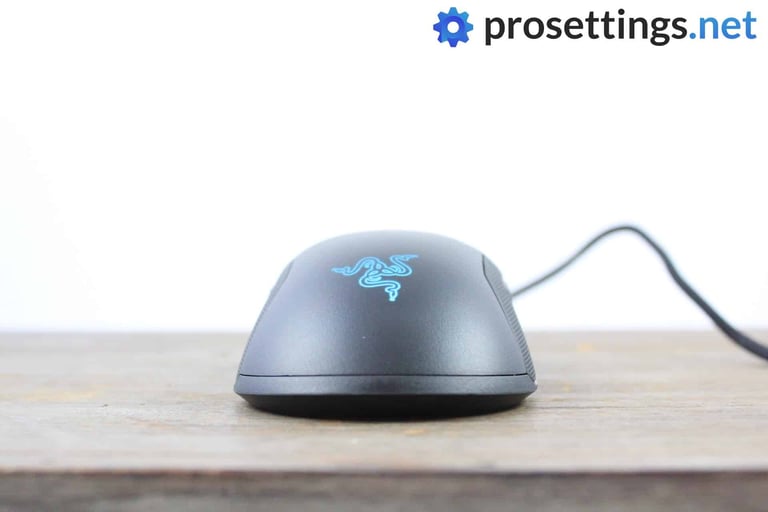
Something that was mentioned in the past with the optical switches was that these advantages weren’t worth the mushier clicks that you got with these, but I’ve got to say that the second version of this switch is mightily impressive. The main buttons are rather loud and a bit on the stiffer side (though that’s something that I personally like) but they are much closer to the clicky and snappy feeling of high quality mechanical switches than what I experienced with the first versions. Unless you’re a purist when it comes to mouse click switches and you have very specific preferences these will feel great.
The main clicks have been implemented perfectly as well: there’s no noteworthy pre- or post travel, and I couldn’t find any side travel on my unit even if I tried. Of course these things can vary between units but I can only review what’s in front of me of course, and if this is the standard that Razer has set for this mouse then that’s very impressive.
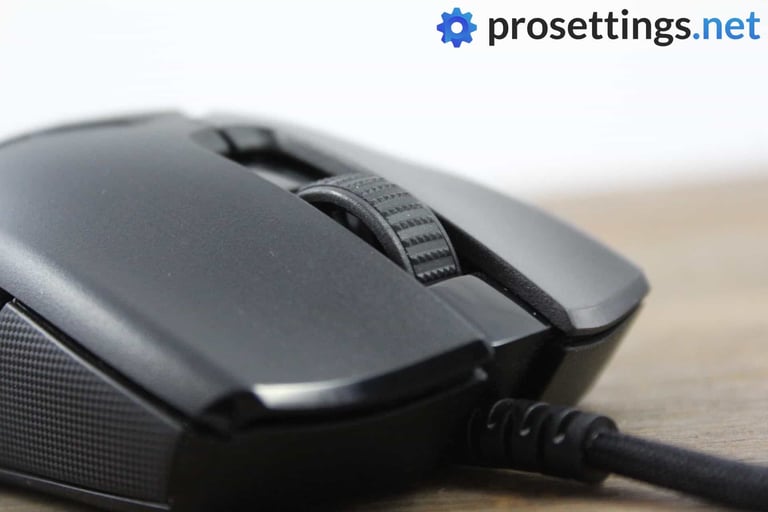
The side buttons actuate with a nice click but they feel a bit stiffer than what you normally get. Not so much so that I had any issues with them ingame, but if you are someone who tends to very quickly brush their side buttons to actuate them it might take you some time to get used to these. There’s almost no post travel on these buttons so they’re implemented really nicely though.
The scroll wheel, then, still sits a bit too deep inside the shell for me personally. That’s of course just my opinion and not something that’s objectively a problem. Everything else about it feels great: it has just enough tactility to allow you to use it for critical operations such as switching weapons but not so much that it gets annoying for browsing, and it’s reasonably quiet. Top that off with a click that’s weighted just about right and you’ve got yourself a great scroll wheel.
Build Quality and Cable
Doing the usual testing (shaking, squeezing, tapping) reveals that this is built really well. Nothing felt loose or annoying, and even when I applied as much pressure as I could the shell did not budge. This is one really nicely built product. Obviously I cannot comment on the actual durability (I don’t test these products for years) but from what I can tell there’s no need to worry.
Razer mentioned that the cable would be stiffer than what they normally use due to the need for extra shielding with the 8KHz technology, so I half expected some kind of dramatically stiff cable here but to my surprise this is all extremely tolerable. Don’t get me wrong: it’s not a great cable, but it’s definitely not the worst that I’ve tested in recent times either. Pop this one in a bungee and you won’t have any issues with it at all. If you’re used to wireless mice you’ll need a bit of time to adjust, but if you’re coming from an older wired mouse (or a recent one with a stiff cable) you probably won’t even feel a difference.
Sensor and Everyday Performance
The Viper 8KHz comes with Razer’s Focus+ Optical sensor. That’s a flawless one, and I found no issues with its implementation. There’s no smoothing, sensor deviation, or anything like that. The sensor isn’t really the selling point of this mouse, however. Yes, it’s flawless (and it goes up to 20000 DPI, which is far beyond what any normal gamer would use to be honest) but all recent gaming mice worth their money have a flawless sensor. The unique factor here is the 8KHz polling rate, so the question is: is it worth it?
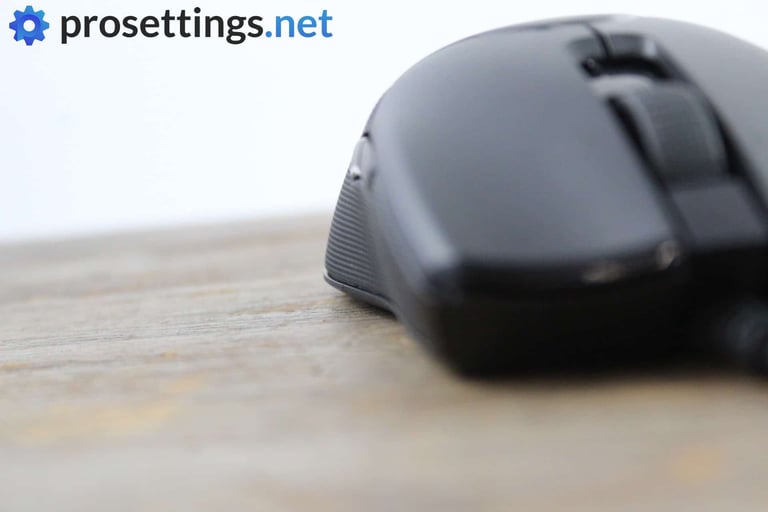
To find that out I did a number of things: I of course used it as my main mouse during my testing, but I also went into a bunch of different programs (KovaaK’s, CS:GO training maps, Valorant’s training range, …) to compare it with the Razer Viper Ultimate that I have lying around. Considering the fact that shape, weight, and so on are also very important for performance I found it best to compare it to another mouse with the same shape instead of any random mouse (or my main mouse). I did some ‘scientific’ testing in the games that I used (where I compared how many targets I hit within a certain timeframe, or how long it took me to kill X targets, or just my test scores) and found that I indeed performed better with the 8KHz. After all was said and done I did around 2% better with the 8KHz compared to the Viper Ultimate, when I counted all of my tests together. Bear in mind that none of this was very scientific, so of course I also used it for normal games and deathmatches.
I felt like the most obvious differences could be felt in scenarios where I had to count on my precision (tracking smaller objects and making micro adjustments) but of course you need to see things in perspective. Using this mouse won’t turn you into ZywOo if you have potato aim, for starters. Then there’s also the fact that factors such as weight, shape, and all of that come into play as well.
This is just me theorizing, but if getting a perfect shape (for you) counts for a 5% performance increase and using an 8000Hz polling rate increases performance by 2% (I’m absolutely not claiming that that 2% number I got after my amateur scientific testing is representative for everyone: I’m just using these numbers as examples) you’re still better off getting a 1000Hz mouse that suits you instead of ‘just any’ 8000Hz mouse.
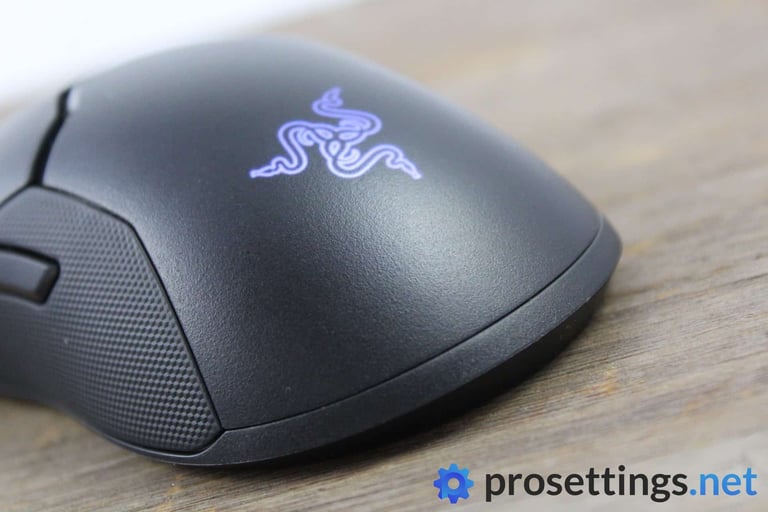
To summarize: there might be a difference between 1000Hz and 8000Hz but it won’t magically raise your rank or something like that, as the difference is extremely small. When I went back to my regular 1000Hz main mouse after the review period I didn’t feel as if I was suddenly handicapped or something, even though it took me some time to adjust, but that might’ve just been because of the different shape. If I could choose between two mice that are the exact same with the only difference being their polling rates I would always go for the 8000Hz mouse though, so it’s nice to see that Razer is trying to elevate the whole mouse game by bringing this stuff to the market.
One very important caveat is that you need some decently beefy gear to reap the rewards: the 8Khz polling rate will make your PC work harder and unless you’re gaming on a high refresh rate monitor the advantages of the high polling rate will not be tangible at all. There’s also the fact that not all games support this kind of polling rate, so you might not get the full benefit from this tech for quite a while. Consider it an early adopter tax.
In conclusion I’d say that unless you’re a Viper (wired) user looking for a new mouse I wouldn’t recommend rushing out to the store to buy a new one. A lot of factors come into play when it comes to aiming, and unless your aim is already nearly perfect and you’re playing at the very highest of levels where every percentage point matters it’s not a massive game changer. Cool new technology? Yes. Would be good to have standard on every mouse in a couple of years? Also yes. Would I be able to tell which one is 8KHz and which one is 1KHz in a blind test? Probably not. Is it mandatory for competitive gamers? No.
Razer Viper 8KHz Review – Conclusion
Even if we leave the whole 8000Hz polling rate thing out of the equation, the Razer Viper 8KHz is a fantastic gaming mouse. It has a safe shape (though be wary of how flat and long it is), great clicks, a flawless sensor, and it’s built nicely, making this a really solid choice for people who are into this kind of shape and like the features.
The standout spec is the 8000Hz polling rate, however. I have to say that I personally do feel that there’s a difference between 1000Hz and 8000Hz but it’s not going to change your whole world. The way I see it, Razer is ‘bringing the future’ to gaming mice. Even if you don’t have the system (you pretty much need a monitor with a refresh rate of at least 200Hz in my opinion, and your PC will need to be up to par as well) to make use of the 8KHz polling rate you can just set the Viper to ye olde 1000Hz and use it like that. You can also do the same if you’re playing a game that doesn’t play nice with these higher polling rates, so it’s not as if you’re stuck in ‘early adopter hell’ if you decide to buy this.
For a full explanation on my thoughts on 8KHz you’ll need to go the ‘performance and sensor’ section, but in short I’ll say: there are more important factors to a gaming mouse than the polling rate. Don’t get this one if you know you will dislike the shape, thinking that the 8KHz polling rate will catapult your aiming skills into the stratosphere. It won’t do that. But if you’re already used to the shape and you’ve got the system to match it might make you a bit more consistent.
It’ll be exciting to see if this tech is going to be the new standard or if it’s merely a flash in the pan, but I for one wouldn’t mind if all gaming mice had this tech in the future. Even if it only improves your overall performance by 1% it’s handy to have on a mouse with all the features that you like.
This product was received for free from the manufacturer and given to our reviewer to test and review. Brands and manufacturers have no editorial control over our reviews. For more information, check out our review FAQ.


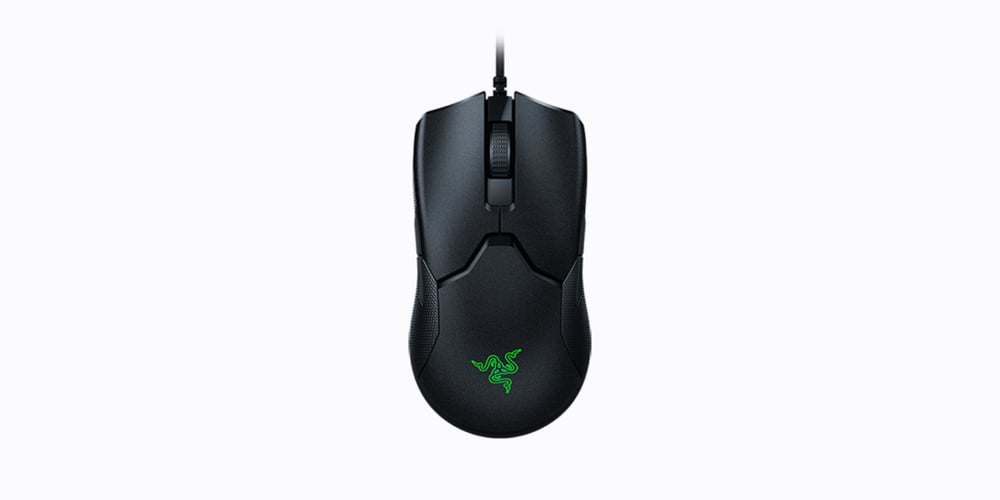





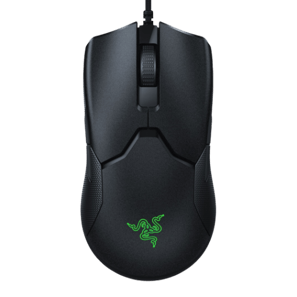


I have this mouse 0 issue in every fps games.. at 8000hz or 4000hz and i used 500hz or 1000 hz to.. That mouse still have 4ms response time no matter what hz rate u use.. still have low input lag 4 ms average.. it is best mouse ever. But when i use 1000 hz or 8000hz it is different, u need to play fast otherwise is pointles if u are to slow it will go max to 2500 3300hz… If u turn very fast it goes like 6700hz.. So Best is 4000hz for start.. If u are slow stay with 1000 hz mouse. Sorry it is how it is. ANd i play cs go and cs 1.0 since begining, Quake Champion, Hallo Infinite. valorant had an issue so they put raw input issue is gone. It is perfect light mouse to play fast.
Hi, I am curious about this mouse but I wonder if if I set 8khz it will not cut the “fortnite” game. I would ask for an answer.
You shouldn’t have any issues in Fortnite using an 8KHz polling rate. There are some games where a polling rate this high can cause issues but as far as I know Fortnite isn’t one of them.
Can i save 1000hz polling rate and wipe synapse 3 from my pc after that?
I think that it’s on 1000Hz by default (I’m not entirely sure since it’s been a while since I reviewed it) but that should definitely be possible!
Hey Matt,
As the author said, yes, this mouse has those five, on-board storage profiles that can each hold separate polling rate hz and DPI/CPI settings. But the fact of the matter is that you DO need Synapse running. Even if you install Synapse to setup the mouse and then prevent it from running at computer startup, it STILL runs a few processes in the background as long as your mouse is plugged in.
But additionally, the mouse is literally ambidextrous (identical on both sides) – so it’s the perfect product for a left-handed mouse user! I just got mine after having a Logitech G502 (non-ambidextrous mouse) for like….7 years…. And as a right-handed mouse user, I was pretty worried about the ambidextrous design. But after just two days of use, I can confirm that this mouse feels amazing! The only issue is that the buttons on your non-thumb side of the mouse are a bit difficult to reach – but that 8000hz polling rate makes it feel absolutely amazing so long as you computer is beefy enough to push your games at a high refresh rate. But anyway, being that you currently have a mouse that is extremely similar to my G502, you’d probably get adjusted to the Viper in a few days – just like I did.
The only other thing to keep in mind is that current USB ports do limit your polling rate to around 4000-5000hz… So I just purchased a separate, PCI-E USB card that’ll allow me to connect my mouse to it and SHOULD allow for the 8000hz polling rate to be reached without any interference from the things occupying any of the other USB ports.
Side note, but good post, Lars =)
Oh, and just another side note. I know that I wrote a lot – but I’m a professional in the tech field, however, I really, really enjoy studying this stuff in my free time just for some fun (and being that I’m an avid gamer, all of my information is based upon things that I’ve discovered to be facts through my research). I just wanted to include that because nobody ever believes in what I write nowadays and they often state that it’s all lies and/or marketing crap…when the truth is, it isn’t lol.
Have a great day, everybody here! Take care!
Great post, love it when people talk tech and mice! Just one note: the G502 and G903 are pretty drastically different shapes, so they’re not all too similar when it comes down to it. Also things like shape and size and how fast people get used to things are different between different people.
Anyway, no need to post your credentials, if your information is good then it’s good!
This is wrong..if you use the USB port that connects to the CPU directly not via the chipsetz you will get 8k rate
Does this mouse save its dpi and 1khz/8khz poll rate settings on board or is Synapse required to run at all times? I’m left handed, coming from a G903 HERO, not quite sure if the Viper is really for me.
The Viper 8KHz has on-board storage, yes. You can store up to five different profiles. If you’re left handed there sadly aren’t that many options for you, but the Viper would be a good one if the shape suits you. Be aware of the fact that it’s a rather flat mouse though (much more so than the G903 in my opinion) so that might take some getting used to.